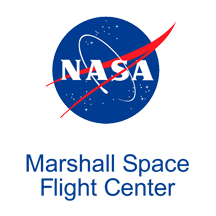NASA To Award Contracts To Eleven Companies To Work On Lunar Exploration
On May 16th, NASA announced that forty-five and a half million dollars is going to be awarded to eleven companies under the terms of NextSTEP E contracts. NASA has been developing a plan for manned lunar exploration. A space station dubbed the Gateway will be placed in orbit around the Moon. Ascent and descent elements will be developed to move astronauts from the lunar surface to the Gateway and from the Gateway to the lunar surface. The vehicles will need refueling which will probably involve the use of hydrogen generated from lunar ice.
Marshall Smith is the director for human lunar exploration programs at NASA Headquarters. He said, “To accelerate our return to the moon, we are challenging our traditional ways of doing business. We will streamline everything from procurement to partnerships to hardware development and even operations. Our team is excited to get back to the moon quickly as possible, and our public/private partnerships to study human landing systems are an important step in that process.”
This NASA program will require that the selected companies provide at least twenty percent of the cost of their contracts. There will be contracts for concept studies and prototypes will have a six-month term. To speed up this process, NASA has told companies that they can go ahead and get started while the contracts are being negotiated.
Blue Origin: Will carry out studies on the descent element and the transfer vehicle.
Aerojet Rocketdyne, Canoga Park, Calif.: Will carry out one transfer vehicle study.
Boeing, Houston: Will carry out one descent element study, one transfer vehicle study, one refueling element study. Will construct two descent element prototypes, one transfer vehicle prototype, and one refueling element prototype.
Dynetics, Huntsville, Ala.: Will carry out one descent element study and construct five descent element prototypes.
Lockheed Martin, Littleton, Colo.: Will carry out one descent element study, one transfer vehicle study, one refueling element study and construct four descent element prototypes.
Masten Space Systems, Mojave, Calif.: Will construct one descent element prototype.
Northrop Grumman Innovation Systems, Dulles, Va.: Will carry out one descent element study and one refueling element study, and construct four descent element prototypes, and one refueling element prototype.
OrbitBeyond, Edison, N.J.: Will construct two refueling element prototypes.
Sierra Nevada Corp., Louisville, Colo., and Madison, Wis.: Will carry out one descent element study, one transfer vehicle study one and one refueling element study. Will construct one descent element prototype andT one transfer vehicle prototype.
SpaceX, Hawthorne, Calif.: Will carry out one descent element study.
SSL, Palo Alto, Calif.: Will carry out one refueling element study and construct one refueling element prototype.
NASA considers the hardware being developed for transporting astronauts from Earth to the Gateway and from the Gateway to Earth to be separate from the project to develop a system to move astronauts between the Gateway and the Moon.
There will be another solicitation referred to as NextSTEP H issued this summer for the purpose of developing the requirements for a manned mission to the Moon by 2024. Greg Chavers is the human landing system formulation manager at NASA’s Marshall Space Flight Center in Alabama. He said, “This new approach doesn’t prescribe a specific design or number of elements for the human landing system. NASA needs the system to get our astronauts on the surface and return them home safely, and we’re leaving a lot of the specifics to our commercial partners.”
